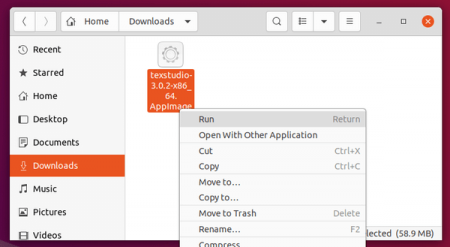

For example, the structure view, the drag-and-drop feature for images and tables, and of course, the auto-complete assistant for formulas and code commands. Tex Studio has some major features that LaTeX users now consider essential when writing documents in plain text. LaTeX isn’t always fun, but with Tex Studio, the frustrations and complications that many LaTeX writers encountered with older apps just aren’t there. Tex Studio is undoubtedly more popular than its predecessor, and with good reason. What first began as a side-project has since become a market leader. However, there’s no denying which version is more popular today. The original program was TeXMaker, and while it has faded away somewhat, it still has plenty of fans. You’ll find everything you need in the bibliography menu Here, you can add footer notes, source material links and various credits and other items used in the research and production of your document. When you are finished creating a document in Tex Studio, there is a reference section. If you need different behaviors from the program, you can simply select a different saved profile that is applicable to your project needs. Tex Studio users can customize the settings of the program, and then save those setting in different profiles. The preview is convenient and easy to use, allowing for dragging and zooming. This function is built-in to Tex Studio, so you won’t require any external plugins.
Texstudio function help pdf#
This will display an instant PDF version on the right-hand side of the editor. After writing, navigate to Tools, then Build & View. Users can view their documents at any time during the creation process, simply by using the instant preview function. These can be read with a suitable reader software, such as a PDF viewer. After compilation, there will be a minimum of seven files in the destination folder, rather than five. If that’s not quick enough, just press the F6 key.Īfter compiling, you can locate the document in whatever destination folder you selected when you were first creating it. To do it, navigate to Tools, then Compile. 55em and depth 0.05em \unicode [.55,0.When you want to compile documents in Tex Studio, it really couldn’t be simpler. \begin % less-than with dot, with height. Your page it only handles the mathematics.

That you will use standard HTML tags to handle formatting the text of Macros of TeX and LaTeX, not the text-mode macros. Accordingly, there are severalĭifferences between “real” TeX/LaTeX systems and MathJax’s TeX Input.įirst and foremost, the TeX input processor implements only the math-mode Since MathJax renders for the web and TeX is a print layoutĮngine, there are natural limitations of which parts of TeX can be (see the TeX and LaTeX extensions below). Through the use of extensions that define additional functionality The TeX input processor hasįew configuration options (see the TeX options section for details), but it can also be customized Notation into MathJax’s internal format (which is essentially MathML),Īnd so acts as a TeX to MathML converter. The TeX input processor handles conversion of your mathematical
Texstudio function help how to#
Tex2jax configuration options section forĭetails on how to customize the action of tex2jax. Markers you want to use for your math delimiters. The tex2jax preprocessor can be configured to look for whatever Processors then displays it in the web page. Notation into MathJax’s internal format, where one of MathJax’s output The TeX input processor is what converts the TeX Math delimiters like $$.$$) and marks the mathematics for later Theįirst of these looks for mathematics within your web page (indicated by Parts: the tex2jax preprocessor, and the TeX input processor. The support for TeX and LaTeX in MathJax consists of two


 0 kommentar(er)
0 kommentar(er)
